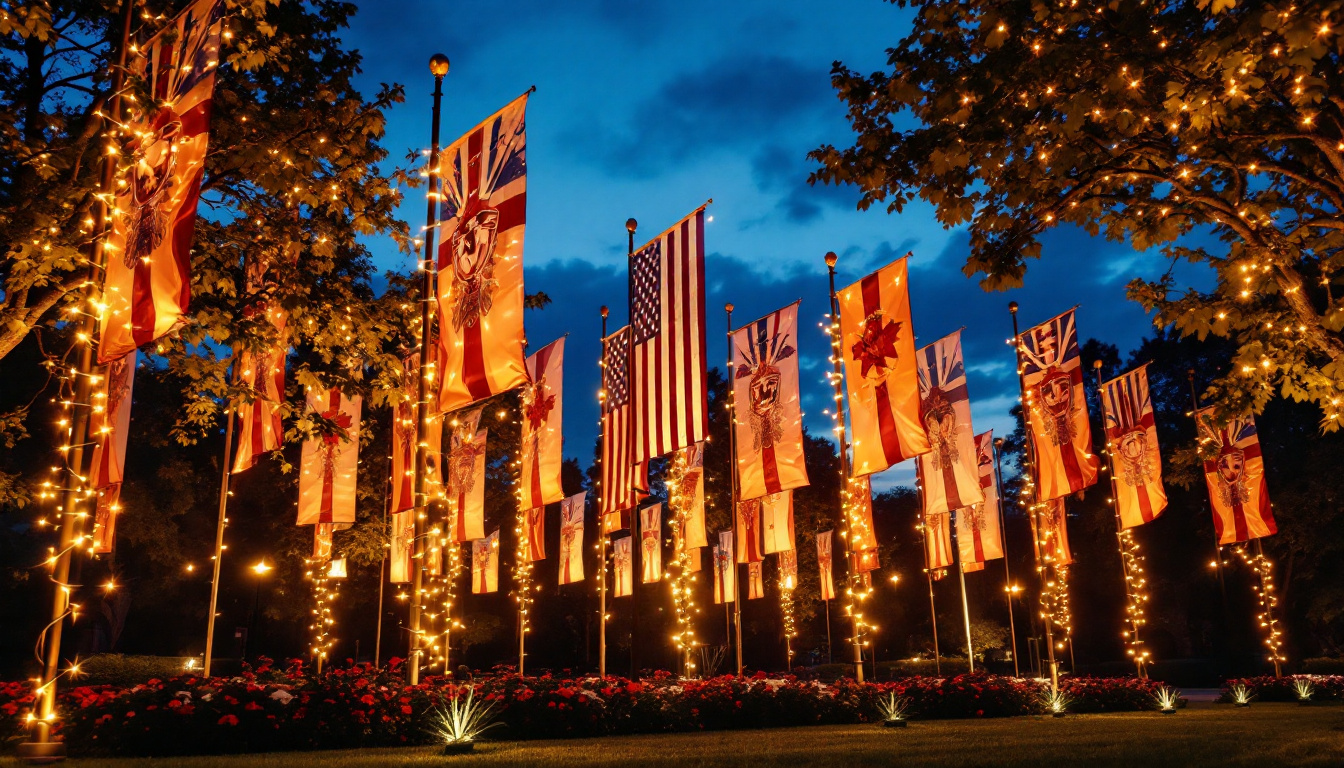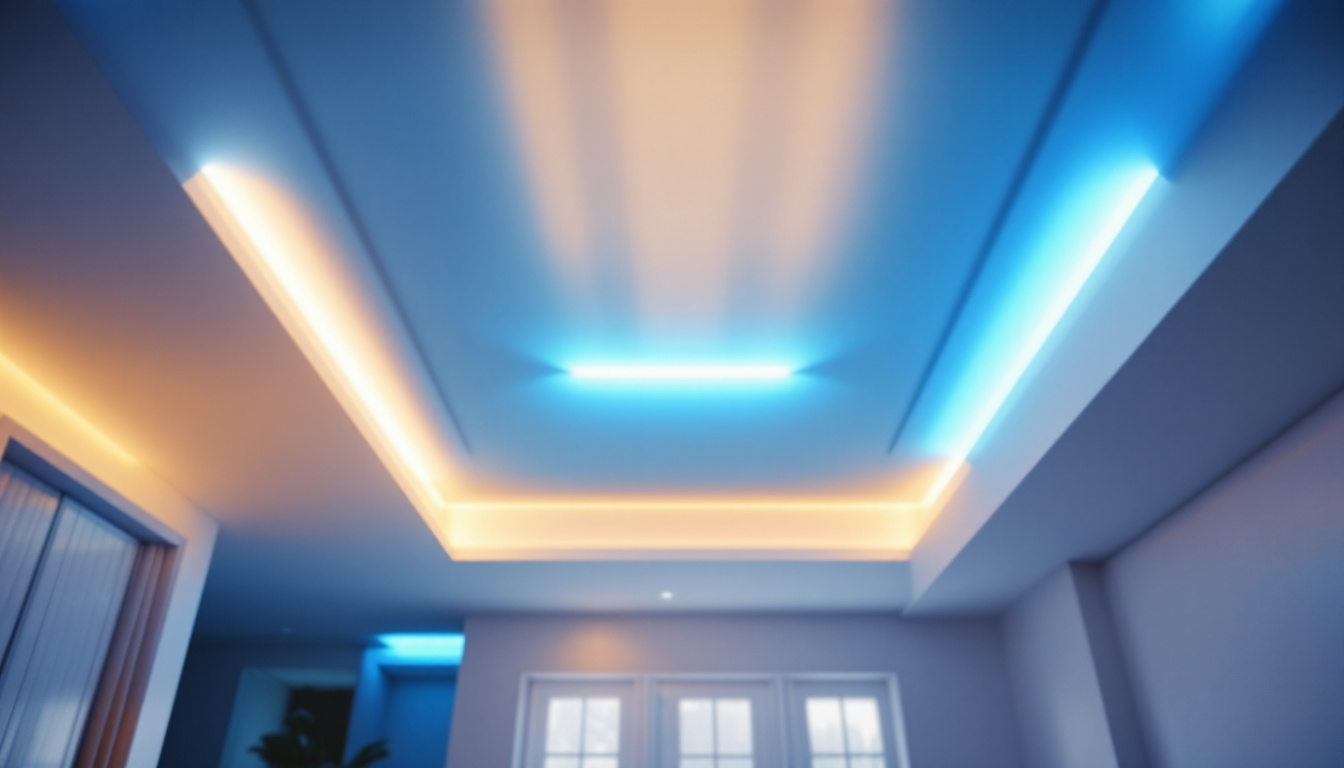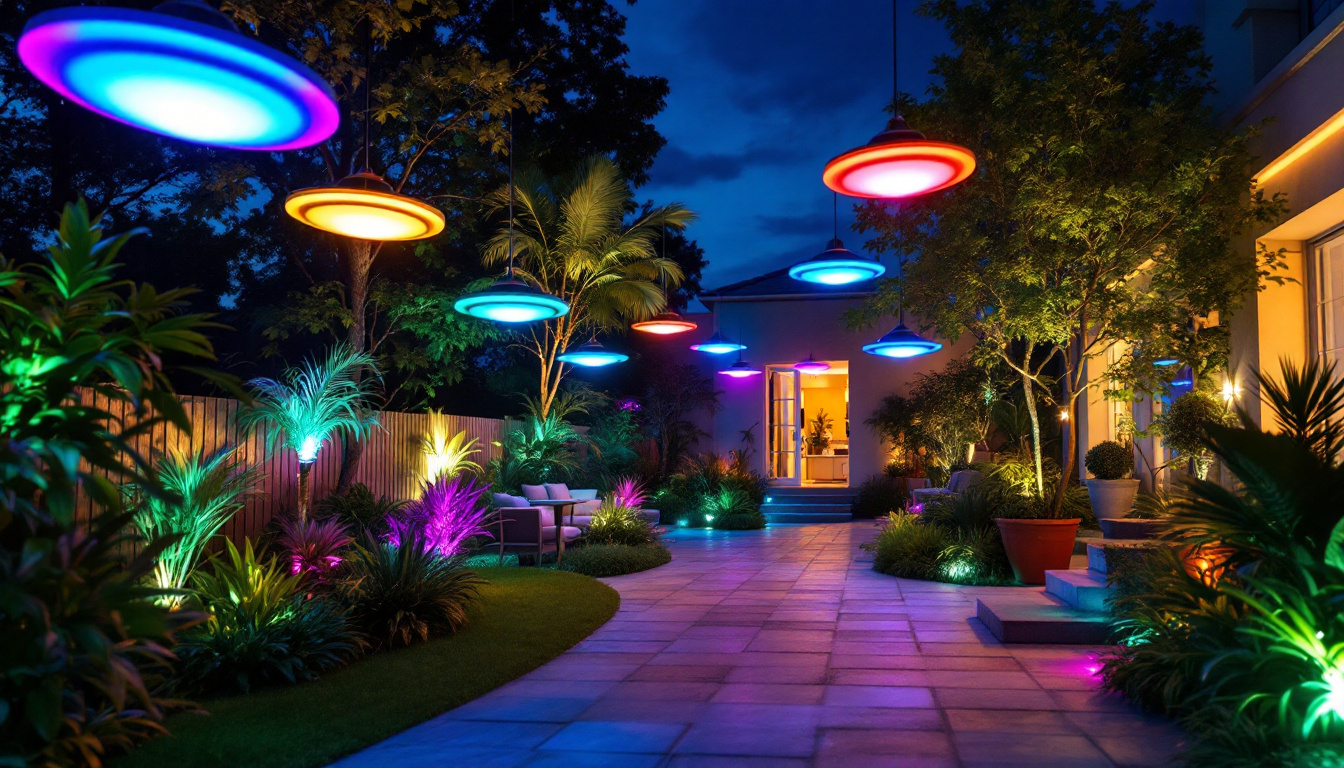
In the world of lighting design, the importance of effective illumination cannot be overstated. Whether for residential spaces, commercial environments, or outdoor areas, the right lighting can transform a setting. Among the various techniques available, solid flag lighting stands out as a powerful method that enhances both aesthetics and functionality. This article delves into the nuances of solid flag lighting, exploring its benefits, applications, and design principles to help lighting contractors elevate their projects.
Solid flag lighting refers to a technique that utilizes flags or panels to control and shape light. This method allows designers to create a specific mood or highlight particular areas while minimizing unwanted light spill. By strategically placing flags, lighting contractors can direct light where it is needed most, enhancing the overall ambiance of a space.
At its core, flag lighting involves the use of opaque materials to block or modify light. This can be achieved through various means, such as using solid panels, fabrics, or even specially designed fixtures. The primary goal is to manipulate the light source to achieve the desired effect, whether it be softening harsh shadows, creating dramatic contrasts, or highlighting architectural features.
One of the most significant advantages of solid flag lighting is its versatility. It can be employed in a wide range of settings, from theatrical productions to art galleries and residential homes. This adaptability allows lighting contractors to customize their designs according to the specific needs of each project.
Additionally, solid flag lighting can enhance energy efficiency. By directing light precisely where it is needed, contractors can reduce the overall wattage required for a project, leading to lower energy costs and a smaller environmental footprint. This is particularly important in an era where sustainability is a key consideration in design.
The applications of solid flag lighting are diverse, making it a valuable tool for lighting contractors. From accentuating artworks in galleries to creating inviting atmospheres in restaurants, the possibilities are endless. Below are some notable applications where solid flag lighting can shine.
In residential settings, solid flag lighting can be used to create cozy and inviting environments. By strategically placing flags around light sources, contractors can soften the harshness of overhead lighting, creating a warm glow that enhances the comfort of living spaces. This technique is particularly effective in areas such as living rooms, dining rooms, and bedrooms, where ambiance is key.
Moreover, solid flag lighting can be employed to highlight architectural features such as crown molding or textured walls. By directing light upward or downward, contractors can create visual interest and depth, transforming ordinary spaces into extraordinary ones.
In commercial settings, solid flag lighting plays a crucial role in branding and customer experience. Retail stores, for instance, can benefit from this technique by using flags to spotlight merchandise, drawing attention to specific products while maintaining an overall cohesive look. This targeted illumination can significantly enhance the shopping experience, encouraging customers to explore and engage with the products on display.
Additionally, restaurants can utilize solid flag lighting to create distinct zones within their spaces. By manipulating light, contractors can establish different moods for dining areas, bar sections, and outdoor patios, ensuring that each area caters to the specific needs of patrons.
In the realm of events and stage lighting, solid flag lighting is invaluable. It allows for dynamic lighting designs that can change throughout a performance or event. By using flags, lighting designers can create dramatic effects, such as creating shadows that enhance the storytelling aspect of a play or concert.
Furthermore, solid flag lighting can be used to control the intensity and direction of light on performers, ensuring they are illuminated in a way that complements the overall aesthetic of the production. This level of control is essential for creating memorable experiences for audiences.
To effectively implement solid flag lighting, understanding key design principles is essential. These principles guide lighting contractors in creating cohesive and visually appealing designs that meet the needs of their clients.
Layering light is a fundamental principle in lighting design that involves combining different types of lighting to create depth and interest. Solid flag lighting can be integrated with ambient, task, and accent lighting to achieve a well-rounded illumination scheme. By layering light, contractors can ensure that spaces are not only functional but also visually engaging.
For example, in a living room, ambient lighting can provide overall illumination, while solid flag lighting can be used to accentuate artwork or architectural features. This layered approach creates a balanced and inviting atmosphere.
One of the primary benefits of solid flag lighting is its ability to control light spill. By using flags to block unwanted light from spilling into areas where it is not needed, contractors can create a more focused and intentional lighting design. This is particularly important in settings where glare or harsh lighting can detract from the overall experience.
For instance, in a home theater, solid flag lighting can be employed to direct light away from screens, ensuring that viewers can enjoy their movies without distraction. Similarly, in galleries, controlling light spill can help preserve the integrity of artworks by preventing unwanted reflections or glare.
Contrast is a powerful tool in lighting design that can evoke emotions and draw attention to specific elements. Solid flag lighting can be used to create striking contrasts between light and shadow, enhancing the drama of a space. This technique is particularly effective in theatrical settings, where lighting can significantly influence the mood and tone of a performance.
By manipulating the placement and intensity of flags, contractors can create dynamic lighting scenarios that captivate audiences and enhance storytelling. This principle can also be applied in residential and commercial designs, where contrast can add visual interest and depth.
The materials used for flags play a crucial role in the effectiveness of solid flag lighting. Different materials can produce varying effects, and understanding these differences is key for lighting contractors.
Opaque materials are commonly used in solid flag lighting as they block light entirely, allowing for precise control over light direction and intensity. These materials can include fabrics, plastics, or metals, each offering unique properties. For instance, a heavy canvas can create sharp shadows, while a metal flag can produce more defined edges.
On the other hand, translucent materials allow some light to pass through, creating softer effects. This can be beneficial in situations where a gentler illumination is desired. By selecting the appropriate material, contractors can achieve the desired aesthetic and functional outcomes.
The color of the flags can also influence the overall lighting design. Darker colors tend to absorb light, creating more pronounced shadows, whereas lighter colors can reflect light, softening the overall effect. Contractors should consider the color palette of the space and the intended mood when selecting flag colors.
For example, in a cozy restaurant setting, warm colors may be more appropriate to create an inviting atmosphere, while cooler colors may be better suited for modern, minimalist designs.
Successfully implementing solid flag lighting requires careful planning and execution. Lighting contractors must consider various factors to ensure that the final design meets both aesthetic and functional requirements.
Before beginning a project, conducting a thorough lighting audit is essential. This involves assessing the existing lighting conditions, identifying areas that require improvement, and determining how solid flag lighting can be integrated effectively. By understanding the unique characteristics of the space, contractors can create tailored solutions that enhance the overall design.
During the audit, it’s crucial to consider factors such as the purpose of the space, the activities that will take place, and the preferences of the client. This information will guide the design process and ensure that the final result aligns with the client’s vision.
Lighting design is often just one aspect of a larger project that may involve architects, interior designers, and other professionals. Collaborating with these stakeholders can lead to more cohesive designs that seamlessly integrate lighting with other elements of the space.
By engaging in open communication and sharing ideas, lighting contractors can ensure that their designs complement the overall vision of the project. This collaborative approach can result in innovative solutions that enhance the functionality and aesthetics of the space.
Once the solid flag lighting has been implemented, testing is crucial to ensure that the design meets the intended goals. This may involve adjusting the placement of flags, modifying light intensities, or even changing materials based on the observed effects. Lighting contractors should be prepared to make these adjustments to achieve the desired outcome.
Additionally, gathering feedback from clients and end-users can provide valuable insights into how the lighting performs in real-world conditions. This feedback loop allows for continuous improvement and refinement of lighting designs.
Solid flag lighting is a powerful technique that can elevate lighting designs across various applications. By understanding its principles, benefits, and implementation strategies, lighting contractors can create stunning and functional spaces that meet the diverse needs of their clients. Whether in residential, commercial, or event settings, the strategic use of solid flag lighting can enhance the overall experience, making it an essential tool in the lighting designer’s toolkit.
As the demand for innovative and sustainable lighting solutions continues to grow, embracing techniques like solid flag lighting will be crucial for lighting contractors looking to stay ahead of the curve. By mastering this technique, professionals can not only improve their designs but also contribute to the creation of more beautiful and functional environments.
Ready to take your lighting designs to the next level with solid flag lighting? At LumenWholesale, we provide lighting contractors with the highest quality, spec-grade lighting products at prices that can’t be beaten. Say goodbye to local distributor markups and hello to our extensive selection that meets rigorous industry standards. With free shipping on bulk orders, you can trust that you’re getting premium lighting solutions at the best value, without any hidden costs. Elevate your lighting projects with the perfect combination of quality, affordability, and convenience. Wholesale Lighting at the Best Value is just a click away. Experience the LumenWholesale difference today.

Discover how 4-foot LED lamps are revolutionizing the lighting industry, offering contractors enhanced efficiency, sustainability, and cost-effectiveness.

Discover how lighting contractors are transforming spaces with LED strip lighting on ceilings.

Discover the future of illumination with insights from expert lighting contractors on LED UFO lights.

Discover the top strategies lighting contractors use to enhance outdoor spaces with solar yard lamp post lighting.